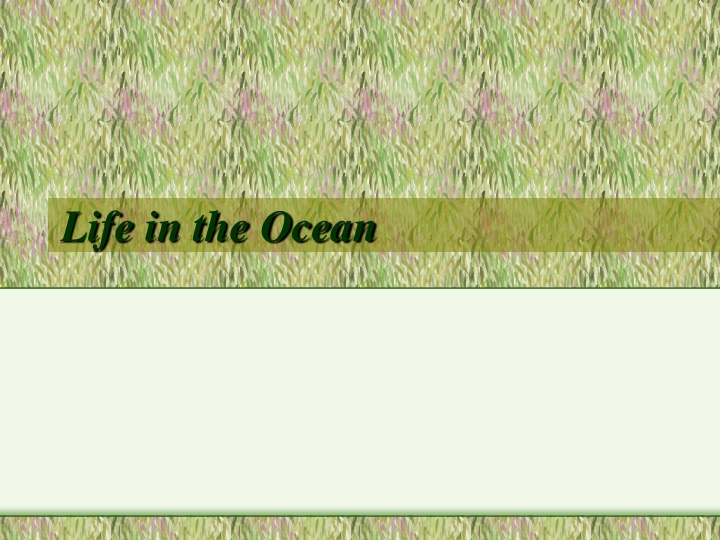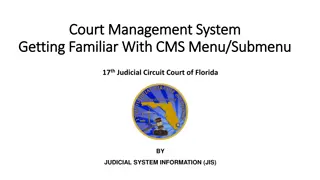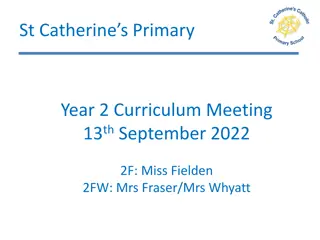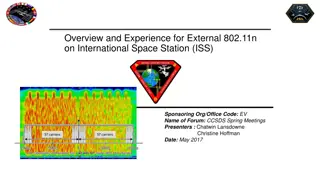
Exploring the Energy Flow in Living Systems
Delve into the intricate balance of energy capture and flow in the oceanic realm, where life thrives on the sustenance derived from sunlight, chemical reactions, and organic matter. Discover the fundamental characteristics of life, the trophic relationships that govern ecosystems, and the critical role environmental factors play in shaping the diversity of organisms. Unravel the complexities of photosynthesis, chemosynthesis, and the dynamic interplay between autotrophs, heterotrophs, and decomposers as they sustain the delicate web of life. Gain insights into the significance of physical and biological factors, such as temperature, salinity, and dissolved gases, in shaping marine ecosystems.
Download Presentation

Please find below an Image/Link to download the presentation.
The content on the website is provided AS IS for your information and personal use only. It may not be sold, licensed, or shared on other websites without obtaining consent from the author. If you encounter any issues during the download, it is possible that the publisher has removed the file from their server.
You are allowed to download the files provided on this website for personal or commercial use, subject to the condition that they are used lawfully. All files are the property of their respective owners.
The content on the website is provided AS IS for your information and personal use only. It may not be sold, licensed, or shared on other websites without obtaining consent from the author.
E N D
Presentation Transcript
characteristics of life requires & uses energy can capture, store, and transmit ultimately from sun, earth heat or chemical reactions highly ordered reproduces changes through time responds & adapts to environment
capture and flow of energy cell where the action is energy capture & use from sunlight (photosynthesis) from chemical reactions (chemosynthesis) from food
capture and flow of energy photosynthesis chemosynthesis
capture and flow of energy trophic relationships autotrophs primary producers convert energy to food heterotrophs consumers & decomposers consume food produced by others
capture and flow of energy depicting trophic relationships trophic levels food chain - simple food web - complex trophic pyramid
Environmental Factors Influence Life Types Physical (abiotic) factor Biological factor Limiting factor presence limits normal action of organisms Examples Photosynthesis - requires light Temperature - influences metabolic rate
physical (abiotic) factors transparency dissolved nutrients temperature exothermic/poiklilothermic/cold-blooded endothermic/homeothermic/warm-blooded salinity extremes - 6 to 40 ppt
physical (abiotic) factors dissolved gases cold water holds more oxygen not easily dissolved avg - 6 ml/l plants use at night large blooms can result in low oxygen levels esp. in closed basins CO2 easily dissolved avg - 50 ml/l 60x that of the atmo. deep water has the most consumers downwelling cold water dissolving organisms
physical (abiotic) factors hydrostatic pressure animals equalize inside and outside pressure effects of high pressure gasses more soluble enzymes don t work metabolic rates higher pH avg seawater is about 8 below CCD about 7.6 lowered by CO2
biotic factors diffusion tendancy of a concentration of a substance to even out from high concentration to low concentration faster in warm water across membranes
biotic factors osmosis diffusion of water through a semi-permeable membrane diffusion from high concentration of water to low concentration of water
biotic factors - osmosis hypertonic concentration of salts inside < concentration of salts outside concentration of water inside > concentration of water outside animal in Great Salt Lake freshwater and some marine animal in ocean animal loses water isotonic concentration inside = concentration outside Some animals in ocean hypotonic concentration of salts inside > concentration of salts outside concentration of water inside < concentration of water outside marine animal in fresh water animal gains water
biotic factors - osmosis animal with salt concentration less than seawater drinks seawater cells lose water to even concentration in the blood animal dehydrates fish (?evolved in fresh water?) internal salinity 1/3 that of the ocean lose water through gills solution: drink seawater and excrete salts seabirds - excrete salt through glands in skull salmon - large kidneys remove excess water during freshwater phase of life, able to recover salts from food and urine
biotic factors active transport movement of dissolved substances from low concentration to high concentration reverse of osmosis requires energy
biotic factors surface-to-volume ratio smaller cells are more efficient at transport and diffusion spherical cell surface area increases with the square of its diameter volume increases with the cube of its diameter cells divide to maintain proper ratio
biotic factors adaptations gas bladders strong muscles less dense solutions in body ie.NH3Cl food stored in waxes and oils gravity and bouyancy density differences water = 1 g/cm3 seawater = 1.025 g/cm3 marine fish = 1.07 g/cm3
biotic factors viscosity and movement reduce drag to swim increase drag to stop sinking large surface area to volume ratio ornamentation warm water less viscous than cold water movement use of currents to move
Factor interplay factors are interlinked factors are influenced by life
classification of environment light photic euphotic disphotic aphotic
classification of environment benthic supralittoral - above the tidal range littoral sublittoral inner - near shore outer - to the edge of the shelf bathyal abyssal Hadal location pelagic - open water neritic - shallow oceanic - deep water epipelagic mesopelagic bathypelagic abyssopelagic
Marine Communities organization organism population community ecosystem ecosphere
Marine Communities organism s place habitat - organisms physical location within a community niche - organisms place (duties) within a habitat
Marine Communities physical and biological factors examples temp, pressure, salinity crowding, predation, grazing, parasitism, shading from light, waste substances, competition for resources (food, oxygen, nutrients) limiting factors limits chances for success different for different animals steno-: tolerant of a narrow range eury-: tolerant of a wide range
Marine Communities: competition within a species between species overlapping niches results survival and reproduction of the most successful less successful moves or dies off growth rate and carrying capacity
distribution of organisms population density species diversity distribution patterns random rare same conditions must exist throughout the community clustered most common individuals of a spies cluster near optimal conditions uniform - vary rare motile vs sessile
species interaction trophic symbiotic often species specific types mutualism commensalism - symbiont benefits, host is not harmed parasitism - host is harmed dependencies one species depends on another (for food) but they do not live in extended contact
change in marine communities usually slow marine conditions rarely change rapidly some rapid processes - volcanoes, earthquakes, landslides climax community stable long established reestablished through succession may be slightly different

![❤[READ]❤ Deep Space Craft: An Overview of Interplanetary Flight (Springer Praxis](/thumb/21511/read-deep-space-craft-an-overview-of-interplanetary-flight-springer-praxis.jpg)



















